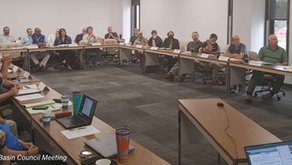Why Work Documentation in Maintenance and Reliability Matters
- JD Solomon
- Apr 8
- 3 min read

Work documentation is tough. Most people prefer doing the work rather than doing the paperwork. However, work documentation is critical in keeping equipment and physical assets running smoothly. When done right, documenting the work helps the team stay organized, supports smart decision-making, and gets more of what you need from senior management. Work documentation is more than paperwork—it’s a foundation for long-term success.
Why Document Work?
There are three main reasons to document maintenance work: to show the need for more staff, to protect yourself (CYA—cover your assets), and to enable useful analysis later.
Obtain More Resources
First, well-documented work can reveal when your team is stretched too thin. If your records show consistently high work hours and backlogs, it becomes easier to justify hiring more help. Without those records, you’re stuck with just your word—which may not be enough.
Protect Yourself
Second, documentation protects you. If something breaks or goes wrong, you want to be able to show what work was done and when. It’s proof that you followed procedures and managed things responsibly. Documentation is important when safety, compliance, or money is on the line.
Identify Trends
When maintenance data is collected over time, it becomes useful for spotting patterns. For example, a pump may fail every 18 months. Without documentation, you might miss that trend. But with good records, you can predict future failures and plan replacements before breakdowns happen.
Software Is Not Everything
Many people think work documentation is about having the right software. However, software is not the heart of the process. Structure and discipline related to following your business processes matter most.
Follow the Process
Work documentation should follow a consistent process. This includes logging what was done, when, by whom, and why. It also involves tracking the parts used, time spent, and any follow-up work needed. Everyone on the team needs to follow the same process so the data is useful and reliable.
Decide Who Owns the Work Documentation Process
Equally important is deciding who owns the process and the data. Is it the maintenance planner? The operations supervisor? A shared responsibility? Without clear ownership, things tend to slip through the cracks.
Make Sure Senior Management Cares
Here’s a tough question: does anyone in management care about the documentation? If not, it’s hard to make it a priority. Many organizations collect too much or the wrong kind of data. However, when leadership sees the value, especially in terms of dollars and downtime, they’re more likely to support the effort. And if senior management cares, most people down the line will care.
Forecasting and Big-Picture Thinking
One powerful use of work documentation is replacement forecasting. By using R&R (Repair and Replace) models, asset health models, and renewal forecasts, organizations can plan for the future instead of reacting to problems. This kind of forward-thinking makes it easier to budget for replacements and upgrades.
Use the Data
Some organizations feel good about their work documentation because most of the blanks are filled in the software. However, a lot of data is entered that is just plain wrong. The best way to test your data is to put it into a forecast.
Speak the Language of Senior Management
Importantly, R&R forecasts tie maintenance data to financial planning. Finances, and more specifically money, is the language of senior management and the board of directors. R&R forecasts help show what needs fixing and what it will cost if it's not fixed soon.
Keep It Simple
The key here is to keep it simple. Start with a simple spreadsheet, Make simplifying assumptions. Build complexity as your team becomes more comfortable with the process. Using your data at the simplest level will reveal many gaps.
Why Work Documentation Matters
Good work documentation is a strategic tool. It helps justify staffing, supports safety and compliance, improves planning, and saves money. Whether you're in a water utility, a factory, or a public works department, clear and consistent documentation makes your maintenance and reliability efforts more effective. In short, the effort makes your job easier in the long run. Work documentation matters.
JD Solomon Inc. provides solutions for program development, asset management, and facilitation at the nexus of facilities, infrastructure, and the environment. Visit our Asset Management page for more information related reliability, risk management, resilience, and other asset management services. Subscribe for bi-monthly updates related to our firm.



